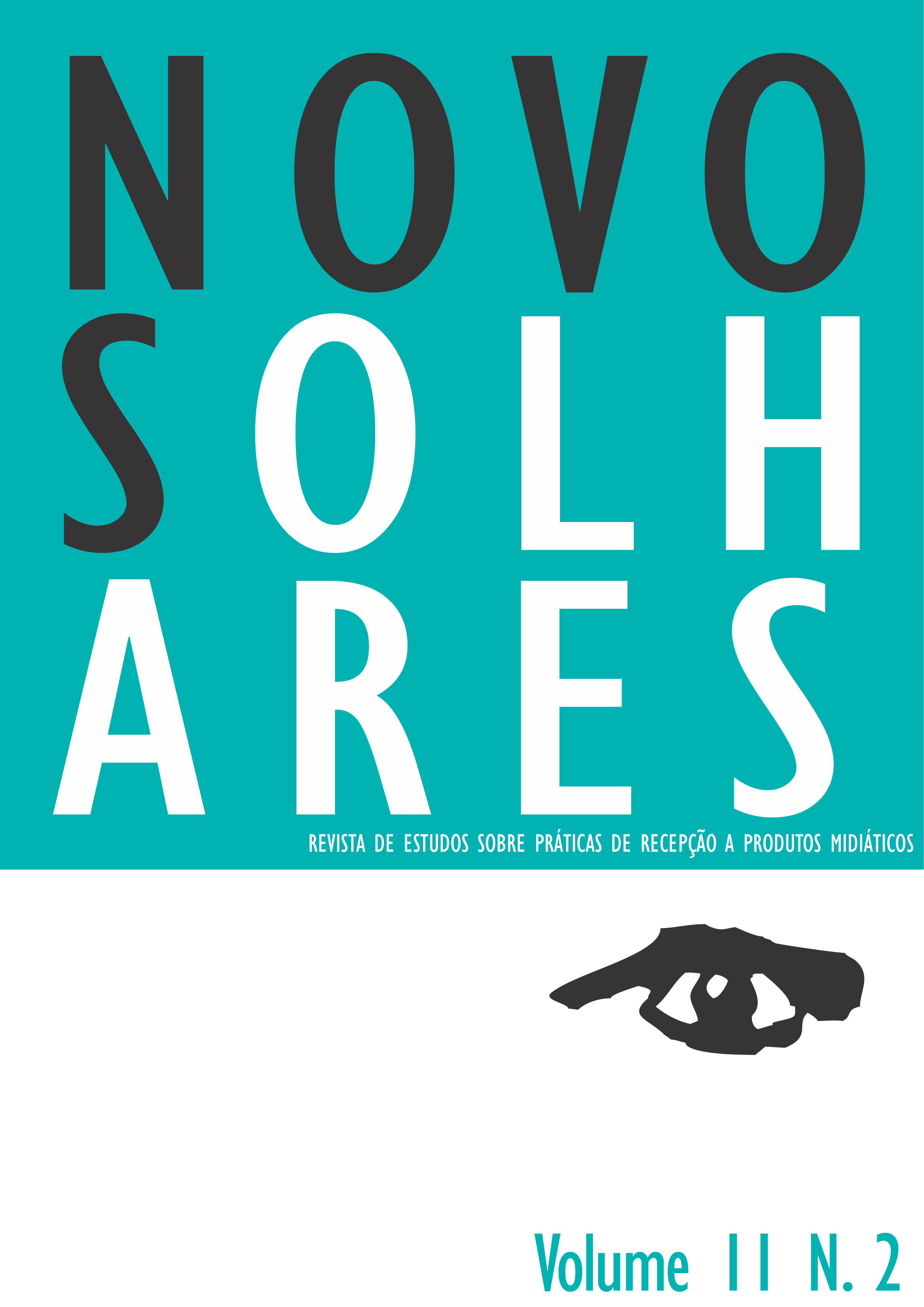As evocações que assombram a interface do computador
DOI:
https://doi.org/10.11606/issn.2238-7714.no.2022.205337Palavras-chave:
Invocação, Evocação, Mídia digital, Arte robótica, Jogos de computadorResumo
Embora os computadores sejam racionalistas, eles lembram o ocultismo ao responder às invocações dos usuários com evocações. As invocações chamam os não humanos para sinais durante as crises. Os outputs são signos evocativos com impacto afetivo e significado. Enquanto a mídia legada é evocativa, transportando ou transmitindo sinais, a mídia invocativa forma relações cibernéticas em rede em uma comunicação viva quase mágica. Este artigo examina a intensidade evocativa de duas obras invocativas que relembram as heranças místicas da tecnologia: a série de videogames de terror Silent Hill e o artista robô Ai-Da.
Downloads
Referências
Cavallaro, D. (2002) The gothic vision: Three centuries of horror, terror, and fear. Continuum.
Coeckelbergh, M. (2019). Moved by machines: Performance metaphors and philosophy of technology. Routledge. https://doi.org/10.4324/9780429283130
Daniel, A. J. (2020). Affective intensities and evolving horror forms: From found footage to virtual reality. Edinburgh University Press.
Denson, S. (2020) Discorrelated images. Duke University Press.
During, S. (2002). Modern enchantments: the cultural power of secular magic. Harvard University Press. https://doi.org/10.4159/9780674034396
Januszczak, W. (2019) I’m looking at the future — and she’s no Frida Kahlo. The Sunday Times, 2 June 2019. https://bit.ly/3Wg6xa7
Kirkland, E. (2012) Gothic videogames, survival horror, and the Silent Hill series. Gothic Studies. 14(2) pp. 106–122. http://dx.doi.org/I0.7227/GS.14.2.8
Leeder, M. (2017). The modern supernatural and the beginnings of cinema. Palgrave Macmillan UK.
Marvin, C. (1988). When old technologies were new: Thinking about electric communication in the late nineteenth century. Oxford University Press.
Olivier, M. (2015) Glitch Gothic. In: Leeder, M. (Ed.) Cinematic ghosts: haunting and spectrality from silent cinema to the digital era, pp. 253–270.
Perron, B. (2012). Silent Hill: The terror engine. University of Michigan Press.
Stephens, E. & Heffernan, T. (2016) We have always been robots: The history of robots and art In: Heratch, D., Kroos, C. & Stelarc. Robots and art: Exploring an unlikely symbiosis. Springer.
Tatar, M. M. (1981). The houses of fiction: Toward a definition of the uncanny. Comparative Literature, 33(2), 167–182.
Turkle, S. (2011) Alone together: Why we expect more from technology and less from each other. Basic Books.
Publicado
Edição
Seção
Licença
Copyright (c) 2023 Chris Chesher

Este trabalho está licenciado sob uma licença Creative Commons Attribution-NonCommercial-NoDerivatives 4.0 International License.
Proposta de Aviso de Direito Autoral Creative Commons
1. Proposta de Política para Periódicos de Acesso Livre
Autores que publicam nesta revista concordam com os seguintes termos:
- Autores mantém os direitos autorais e concedem à revista o direito de primeira publicação, com o trabalho simultaneamente licenciado sob a Licença Creative Commons Attribution CC Attribution-NonCommercial-NoDerivatives 4.0, que permite o compartilhamento do trabalho com reconhecimento da autoria e publicação inicial nesta revista.
- Autores têm autorização para assumir contratos adicionais separadamente, para distribuição não-exclusiva da versão do trabalho publicada nesta revista (ex.: publicar em repositório institucional ou como capítulo de livro), com reconhecimento de autoria e publicação inicial nesta revista.
- Autores têm permissão e são estimulados a publicar e distribuir seu trabalho online (ex.: em repositórios institucionais ou na sua página pessoal) a qualquer ponto antes ou durante o processo editorial, já que isso pode gerar alterações produtivas, bem como aumentar o impacto e a citação do trabalho publicado.



